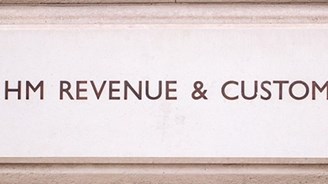More proposed changes to UK GAAP
When the suite of accounting standards making up new UK GAAP was originally released, one of the hopes was that it would herald a period of stability for companies in the UK, who would have a certain amount of work to do to prepare themselves for applying FRS 102, or perhaps FRS 101 if they qualified and chose to use it, but would benefit from this in easier and more streamlined reporting in future.
To support this, the FRC undertook to perform a triennial review, looking every three years at application issues that had arisen, and at changes in IFRS that may or may not need to be reflected in UK accounting standards too. The results of the first triennial review were shared at the very end of 2017 and led to a number of often fairly minor changes to the standards effective mostly from January 2019.
It seems more changes are needed already, though, and at the end of January the FRC proposed further amendments by issuing FRED 70 Draft amendments to FRS 101 Reduced Disclosure Framework – 2018/19 cycle and FRED 71 Draft amendments to FRS 102: Multi-employer defined benefit plans.
The proposed changes to FRS 102 are very limited in scope. The standard says at present that where an entity is part of a multi-employer defined benefit pension plan but can’t identify its share of the plan assets and liabilities, it simply accounts for its contributions as if it were a defined contribution plan. This includes recognising a liability in cases where the plan is in deficit and there is an agreed schedule of contributions for participants to make up this deficit. It has always been the case that as soon as an employer can identify its share of assets and liabilities in this situation, it moves over to defined benefit accounting.
It’s likely that most companies have not given a further thought to this, but it became clear to the FRC that there was a gap in the guidance – how does a company actually account for the transition in this case from defined contribution to defined benefit accounting? The proposed solution is simple: compare any liability currently recognized (eg where there is a schedule of contributions) to the liability that now needs to be recognized as a share of the defined benefit obligation (let us assume the scheme is not in surplus!) and then recognize the movement in other comprehensive income. This would mean there was no immediate hit to profit relating to being able to identify the share of the defined benefit liability. This is a welcome clarification, and if it passes the consultation period (comments close at the end of March) then it will be effective from 2020, with earlier adoption permitted.
It’s important to note that this only applies to multi-employer schemes. An employer using a stand alone scheme will always be able to identify at the start whether it is defined benefit or defined contribution, so would only change its accounting if there was an actual change in the scheme rules, which is already covered by the standard.
As for FRS 101, the proposed change is simple and of niche interest: it says that if or when the new international standard on insurance, IFRS 17, is adopted for use in the EU, insurance companies will not be able to use FRS 101. This is mainly because of difficulties reconciling the prescribed accounts formats in company law with those that would be needed for compliance with IFRS 17.
For most readers, it may well be that neither of these proposed changes is relevant. But they do show the need to stay vigilant about the contents of new UK GAAP, which are perhaps not quite as fixed as we might like to think. The proposed changes can be found on the FRC website, here.



